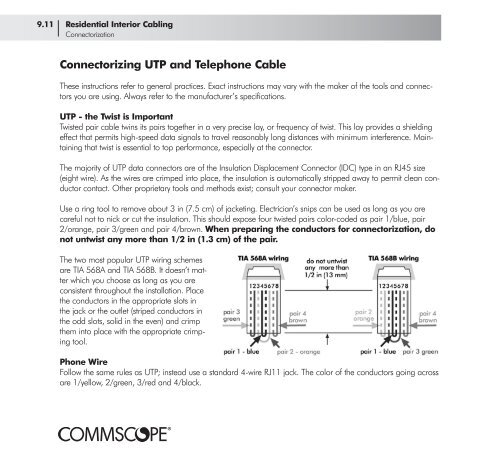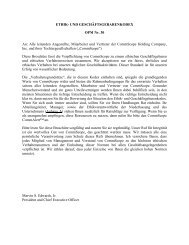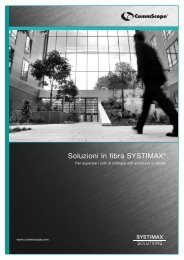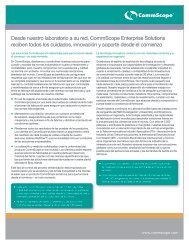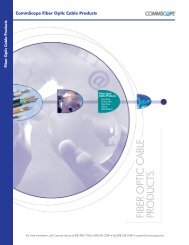Broadband Applications & Construction Manual - Public - CommScope
Broadband Applications & Construction Manual - Public - CommScope
Broadband Applications & Construction Manual - Public - CommScope
Create successful ePaper yourself
Turn your PDF publications into a flip-book with our unique Google optimized e-Paper software.
9.11 Residential Interior Cabling<br />
Connectorization<br />
Connectorizing UTP and Telephone Cable<br />
These instructions refer to general practices. Exact instructions may vary with the maker of the tools and connectors<br />
you are using. Always refer to the manufacturer’s specifications.<br />
UTP - the Twist is Important<br />
Twisted pair cable twins its pairs together in a very precise lay, or frequency of twist. This lay provides a shielding<br />
effect that permits high-speed data signals to travel reasonably long distances with minimum interference. Maintaining<br />
that twist is essential to top performance, especially at the connector.<br />
The majority of UTP data connectors are of the Insulation Displacement Connector (IDC) type in an RJ45 size<br />
(eight wire). As the wires are crimped into place, the insulation is automatically stripped away to permit clean conductor<br />
contact. Other proprietary tools and methods exist; consult your connector maker.<br />
Use a ring tool to remove about 3 in (7.5 cm) of jacketing. Electrician’s snips can be used as long as you are<br />
careful not to nick or cut the insulation. This should expose four twisted pairs color-coded as pair 1/blue, pair<br />
2/orange, pair 3/green and pair 4/brown. When preparing the conductors for connectorization, do<br />
not untwist any more than 1/2 in (1.3 cm) of the pair.<br />
The two most popular UTP wiring schemes<br />
are TIA 568A and TIA 568B. It doesn’t matter<br />
which you choose as long as you are<br />
consistent throughout the installation. Place<br />
the conductors in the appropriate slots in<br />
the jack or the outlet (striped conductors in<br />
the odd slots, solid in the even) and crimp<br />
them into place with the appropriate crimping<br />
tool.<br />
Phone Wire<br />
Follow the same rules as UTP; instead use a standard 4-wire RJ11 jack. The color of the conductors going across<br />
are 1/yellow, 2/green, 3/red and 4/black.


